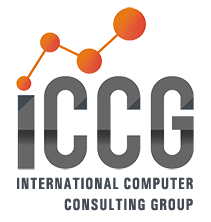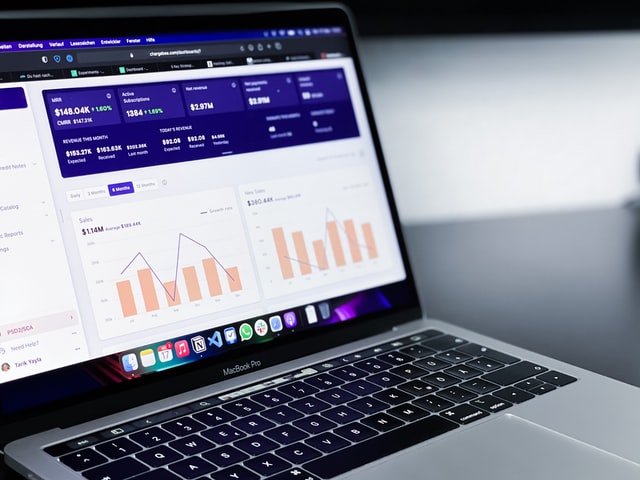The evolution of supply chain business models has been accelerated by unprecedented disruptions. As a result, there has been a clear shift from analog supply chains models of the past into a trajectory towards a digitalized ecosystem. These new business models recognize and necessitate the move to a digital and integrated supply chain that provides visibility and ease of use for consumers.
This journey is about moving towards a world where all parties participating across your network are connected to a single version of the truth. Supply chain thinking is shifting from ‘linear supply chains’ to ‘supply chain eco-systems’ propelled and supported by digital technologies.
Gartner has established a five-stage model of the journey to supply chain maturity, ranging from manual, analog systems to a fully digitalized ecosystem. Key differentiators along this evolutionary chain include consideration of data and collaboration, with the ultimate goal of integrating data across multiple systems to achieve a fully connected ecosystem that provides transparency and visibility for your company both internally and externally.
Read More
Topics: ERP, Fashion & Retail, Distribution, Supply Chain, Fashion & Apparel, Supply Chain Visibility, Supply Chain Network, Cloudsuite Fashion & Apparel, Infor CloudSuite PLM for Fashion, Infor CloudSuite Fashion PLM, Enterprise Software, Infor CloudSuite Fashion, Supply Chain Operations, Supply Chain Management, Infor CloudSuite M3, Infor CloudSuite ERP
Stability is important. Hotels, casinos, and resorts have guests they need to serve right now, today. Hospitality software solutions in place help them do that by taking care of the basics: reservations, check-ins, folios and check-outs, along with a staggering variety of in-house services and their associated charges. Essential software like hotel PMS is pretty “sticky” that way; it’s easier to stick to what you’ve got than it is to change. Why fix what isn’t broken?
Here’s the thing. Five years from now – perhaps sooner – the way guests engage with hospitality providers will likely look very different. Innovative solutions and platforms will be necessary to scale to that new paradigm, whatever it may be. So how do hospitality organizations know when it’s time to start planning for that? How do decision-makers know when it’s time to get unstuck? Here are 3 considerations to help answer that question.
Read More
Topics: ERP, Distribution, Process Manufacturing, AI, Artificial Intelligence, Food Technology, Business Intelligence, Cloud BI, Enterprise Asset Management, Enterprise Software, Business Processes, Infor CloudSuite M3, Infor CloudSuite ERP
As new hospitality technology emerges and as organizations increasingly invest in it, the ways people do their jobs change in response. Most of the time, this means greater efficiency, and a way for teams to concentrate on key tasks while the technology takes care of the necessary minutiae. Some of the time though, the rise of certain technologies can cause some concerns that with certain functionality in place, the human factor will get lost.
Hospitality AI functionality in hotel revenue management and in hotel pricing tools is a case in point. The conversation around automation via algorithms has been too easily positioned with a “versus” between machine learning solutions and professional expertise. Yet, the features of the technology and years of knowledge and experience held by revenue and strategy teams isn’t adversarial. The relationship between them is more about achieving greater focus and clarity. How do science-based algorithms in revenue management and pricing solutions help your organization do that? Let’s look at some key points.
Read More
Topics: ERP, Distribution, Process Manufacturing, AI, Artificial Intelligence, Food Technology, Business Intelligence, Cloud BI, Enterprise Asset Management, Enterprise Software, Business Processes, Infor CloudSuite M3, Infor CloudSuite ERP
Are you able to monitor all intraday activity for true cash visibility?
Today, financial services organizations are more focused on what’s necessary to safeguard business continuity and solvency. Much of this begins with greater visibility and reliability of key data to help drive your critical business decisions, especially during critical market changes.
Our current blog series is reviewing cash and treasury best practices you can follow to prepare for instant payments and build true cash visibility. In the previous post, we reviewed best practices for enhancing cash and liquidity forecasting. This week, we focus on ways to establish intraday liquidity monitoring capabilities.
Consideration #4: Establish intraday liquidity monitoring capabilities
Banks and financial services organizations bound by intraday liquidity regulations have an opportunity to build a stronger competitive position.
According to consulting firm Oliver Wyman: “Analysis indicates that a 25–50% reduction in intraday liquidity costs is well within reach. Further, banks will also stand to benefit from optimal efficiency, improved risk management, and timely decision-making around this scarce resource.” There are numerous financial and non-financial benefits, as well as new technological tools that simplify these complex treasury functions.
Download the eBook
Cash and treasury: Prepare for instant payments and build true cash visibility
Read More
Topics: ERP, Distribution, Supply Chain, Enterprise Resource Planning, Cloudsuite Fashion & Apparel, Infor M3 ERP, Infor CloudSuite PLM for Fashion, Infor CloudSuite Fashion PLM, Enterprise Software, Infor CloudSuite Fashion, Supply Chain Management, Infor CloudSuite M3, Infor CloudSuite ERP
Traditionally, almost all business intelligence and analytics solutions were designed as general-purpose platforms or desktop tools suitable for any industry, department, or use case. That does mean, of course, that the burden of developing data models, data pipelines, dashboards, and reports falls to the customer. They effectively start with a 'blank sheet of paper,' which, in theory, can be developed to fit the organization's exact needs. However, the reality is that the organization may not have either the skills, resources, or time to develop an analytics solution that quickly meets business requirements.
The answer to avoiding this overhead of entirely homegrown analytics is to use a modern analytic application that can deliver ready-to-use analytics, right "out-of-the-box." Deployment and adoption of these analytic applications are accelerated because of built-in content developed by industry domain experts that understand the industries, roles, data, business applications, and specific analytics required by typical business user personas. A significant amount of development time can be saved because this domain-expertise-driven content can replace typical internal development processes.
Read More
Topics: ERP, Manufacturing, Distribution, Process Manufacturing, Industrial Manufacturing, Digital Manufacturing, Business Intelligence, Cloud BI, Enterprise Asset Management, Enterprise Software, Business Processes, Infor CloudSuite M3, Infor CloudSuite ERP
A critical lesson many organizations have learned when measuring the success of analytics initiatives is that speed of deployment and widespread user adoption are key factors to consider. These are key benefits of analytic applications delivered with or embedded in ERP systems or business applications.
Analytic applications provide pre-built business intelligence (BI) and analytical capabilities that promise to democratize analytics because most of the hard work in transforming data to insights has already been done. However, the historical challenge these applications faced was that they weren’t built with agile cloud technology or modern data architectures that could keep up with the growing complexity, scale, and changing requirements of the line of business (LOB)-driven analytic requirements.
Read More
Topics: ERP, Fashion & Retail, Distribution, Supply Chain, Fashion & Apparel, Supply Chain Visibility, Supply Chain Network, Cloudsuite Fashion & Apparel, Infor CloudSuite PLM for Fashion, Infor CloudSuite Fashion PLM, Enterprise Software, Retail Supply Chain, Infor CloudSuite Fashion, Supply Chain Operations, Supply Chain Management, Infor CloudSuite M3, Infor CloudSuite ERP
Why settle for anything less?
Distributors often operate behind the scenes, making sure other businesses have what they need. The projects they support continue because tools, equipment, and supplies are where they needed to be. Patients have procedures because instruments are available. Structures are built because materials are ready. Restaurants can serve customers because food, drinks, plates, and pots are on hand.
Recent events revealed just how critical the distributor’s role is in the supply chain. In reality, it’s extremely complicated to seamlessly move such high volumes of goods. Especially as expectations and behaviors have evolved in the last decade, distributors have had to adapt their solutions, processes, and levels of service.
Historically, many distributors would customize enterprise resource planning solutions to meet their unique requirements. This approach, however, created an unwilling in-house IT cottage industry dedicated to supporting the infrastructure and modifications, instead of strategic initiatives. We see this during evaluations with prospective Infor customers; when distributors compare our CloudSuite solutions to their current footprint, we typically discover that hundreds if not thousands of their current modifications would no longer be needed. Because our solutions are designed for the distribution industry, the best practices those companies require are built in. For example, when HVAC and industrial product distributor, EMCO, moved to CloudSuite Distribution Enterprise, the company removed over 4000 modifications. EMCO no longer needed to maintain customizations and project manage long upgrade initiatives. That fluctuating, unpredictable overhead goes away forever because EMCO’s new mutli-tenant cloud solution is automatically updated monthly. Their technology is always current and always adding new distribution functionality to align with nuances and needs of this industry
Read More
Topics: ERP, Distribution, Supply Chain, Fashion & Apparel, Supply Chain Visibility, Supply Chain Network, digital disruption, Enterprise Software, Retail Supply Chain, Supply Chain Operations, Supply Chain Management, Infor CloudSuite M3, Infor CloudSuite ERP
The ability to execute, seamlessly and in real-time, is critical as your company works to develop a continuous supply chain. Being uniquely capable of connecting multiple facets of this execution -- not just to an order management system but also to TMS for transportation management and WMS for warehouse management will be key components to implementing continuous supply chain execution.
Integrated multi-party source-to-settle process
Sourcing execution or the ability to establish real-time connectivity to suppliers is key. What we are really speaking to here is the need to orchestrate end-to-end physical and financial operations between order management, global trade management, transportation, warehouse, product traceability, and even payables management.
Streamlined manufacturing
Manufacturing execution is focused on streamlining processes, driving better decision making and gaining productivity. Supply chains must optimize and automate the manufacturing process from raw materials and components to finished goods. Having the ability to anticipate and optimize lead times is crucial for downstream improvement.
Read More
Topics: ERP, Fashion & Retail, Distribution, Supply Chain, Fashion & Apparel, Supply Chain Visibility, Supply Chain Network, Cloudsuite Fashion & Apparel, Infor CloudSuite PLM for Fashion, Infor CloudSuite Fashion PLM, Enterprise Software, Retail Supply Chain, Infor CloudSuite Fashion, Supply Chain Operations, Supply Chain Management, Infor CloudSuite M3, Infor CloudSuite ERP
Asset Investment Planning enables your asset-intensive organization to determine which asset investments will enable you to best meet your service level objectives with the right level of expenditure while minimizing the risk of asset failure. An API can also help you determine the best time to invest in order to smooth your capital expenditures over time.
Modern AIP solutions simplify the process of developing asset investment plans by allowing you to leverage the data that is already in your asset registry in your enterprise asset management (EAM) to tell you what assets your organization has, your work management system that manages maintenance operations, and your asset performance management (APM) system that monitors asset condition reliability.
You use that data to quantify four key inputs: Asset condition, asset criticality, business risk, and level of service. Asset condition allows you to visualize deterioration over the asset’s lifetime and establish where intervention is necessary. Asset criticality determines the impact the failure of an individual asset will have on your organization’s ability to realize your business objectives. Business risk determines the consequences of asset failure. Level of service required enables your organization to operationalize your organization’s policies, strategies and objectives, tie those to KPIs and then link that to level of service requirements.
Read More
Topics: ERP, Distribution, Supply Chain, Supply Chain Visibility, Supply Chain Network, Enterprise Asset Management, Enterprise Software, Retail Supply Chain, Infor CloudSuite Fashion, Supply Chain Operations, Supply Chain Management, Infor CloudSuite M3, Infor CloudSuite ERP
The future of planning is connected, intelligent, and continuous. Yet many companies remain so far away from this vision, it often seems unachievable. With many planning processes being so siloed and disconnected from execution, they can feel ineffective.
Fortunately, evaluations of the planning landscape reveal many organizations are adopting technologies that move towards a de-siloed, network-based approach to planning. For these companies, the primary goal centers around connecting planning capabilities to “a single version of the truth.” To optimize planning capabilities, it crucial to achieve this connection at the enterprise level as well as into the broader supply network.
But to do this involves using integrated business planning (IBP) or sales and operations planning (S&OP) to collaborate and analyze, perform demand planning to improve forecasting, optimize supply planning, and facilitate synchronization. Each of these areas are critical to a successful planning process and are more powerful when integrated and connected across a network.
Read More
Topics: ERP, Fashion & Retail, Distribution, Supply Chain, Fashion & Apparel, Supply Chain Visibility, Supply Chain Network, Cloudsuite Fashion & Apparel, Infor CloudSuite PLM for Fashion, Infor CloudSuite Fashion PLM, Enterprise Software, Retail Supply Chain, Infor CloudSuite Fashion, Supply Chain Operations, Supply Chain Management, Infor CloudSuite M3, Infor CloudSuite ERP


.jpg)







